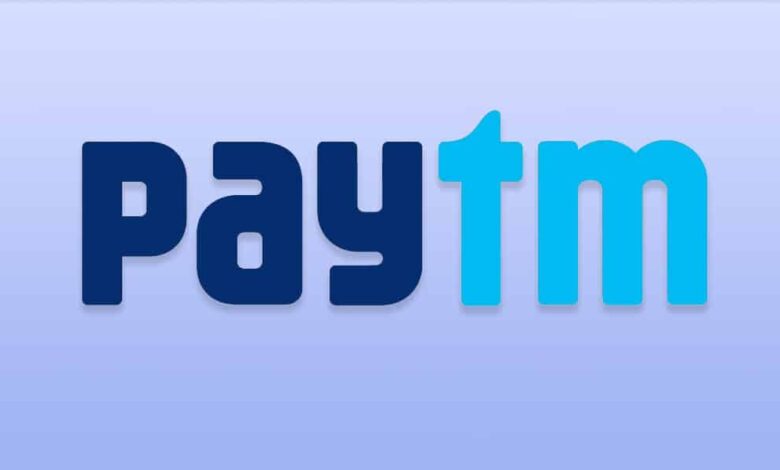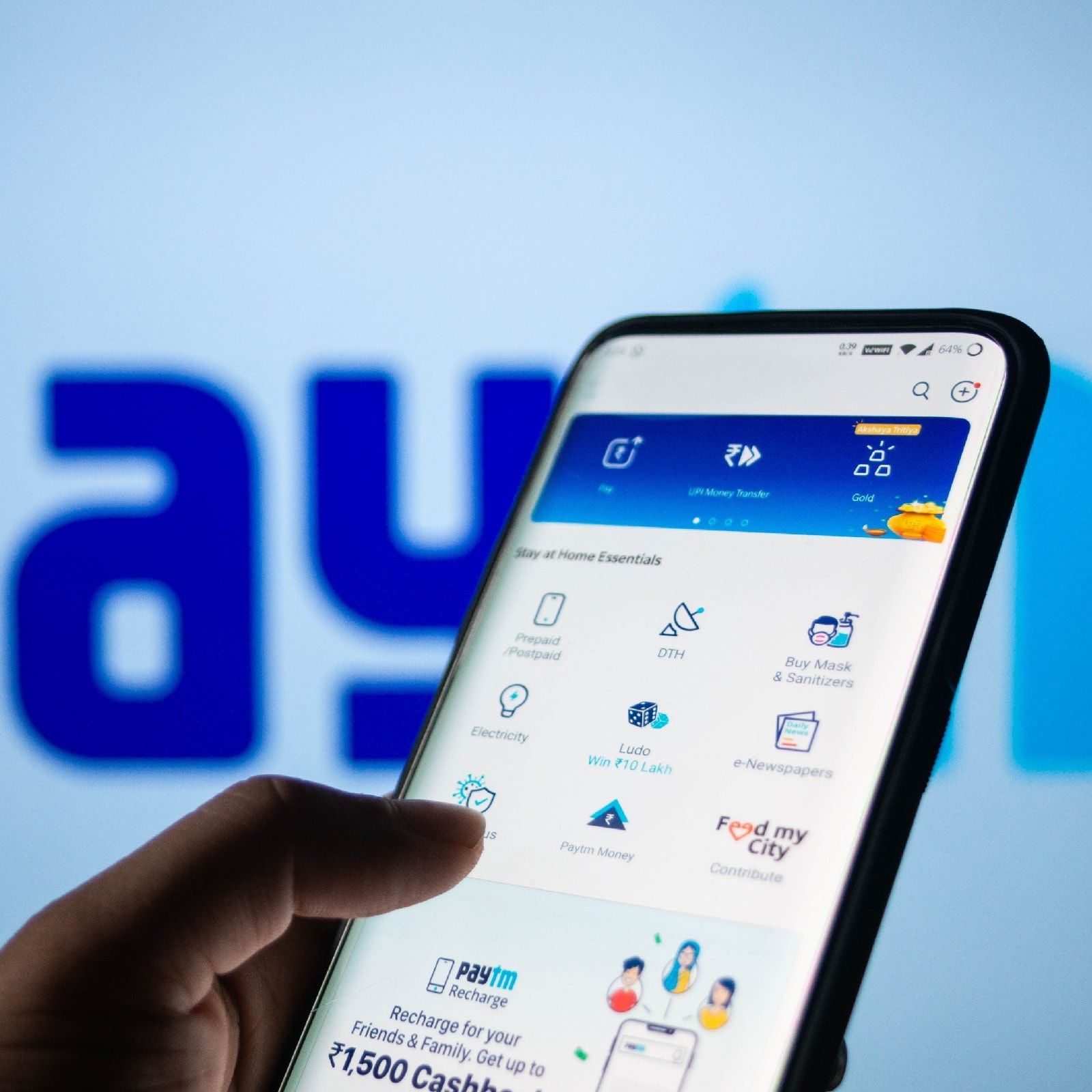Paytm costs INR 700? Being too much of a Jack of all trades hurts profitability and investor confidence.

Unlike other analysts at Macquarie, Suresh Ganapathy doesn’t make a big deal about his job. A few hours before Paytm was set to start trading on the stock market, Ganapathy had a report on the company that said the stock price was overvalued by 40%, and the company had “too many hands in too many pies.”
Whether or not the report had anything to do with hurting Paytm’s share prices is hard to say. The stock dropped 27% that day. A new report from Ganapathy says that the stock should fall to around INR700, which is less than a third of the price when it was first sold. This is in line with other brokerages’ reports that Paytm’s downside is limited and that the stock can move up from here on out.
One97 Communications, better known as Paytm, plans to go public in
Stock prices fall when people lose confidence in a company. Some of the people who have been excited about India’s long-term fintech storey are now questioning the company’s business model and whether it will even make Money.
Analysts are split. Three brokerage firms recently released reports on the stock, and two think it will be suitable for a long time. On the other hand, Ganapathy is one person who won’t give in. Still, he thinks the stock is too high. Because he called off the company on the day, it went public, and people should pay attention to his views.

The edge that isn’t there
Because it isn’t clear when the company will start making money, even though ICICI Securities and Goldman Sachs think it will. As of now, out of all the businesses Paytm has, only the payments bank has made Money. Investors are wondering about other companies and want to know when they will make Money. If the stock has a lot of value, they want to pay attention to it.
Business: “I buy businesses that have some core profitability, and for their prices to be worth it, these New Age stocks must fall as much as 90%.” Shankar Sharma, the founder of GQuant Investec, a global investment management and fintech company, says that the main problem is with how they were valued. “The main issue is how they were valued,” Sharma says.
In my opinion, Paytm and almost all of the fintech businesses in India don’t have any new ideas or ways to be better than the rest. He says that for any business to last, it must have a unique selling point or “edge.”
It seems like Sharma thinks that Paytm has gotten into too many businesses. It does not look like it will be profitable for a while, so Sharma believes that this is bad for the company. If you’re just a lender dressed up as tech, a 3 to 4 times book value multiple is fair.” As he says, “You still have a long way to go before you are truly valued.”
If a company doesn’t have a moat or an advantage, investors don’t like this very much. Paytm has grown into a massive business with many different ways to make Money, and valuations don’t like it when these income streams aren’t making Money. Analysts like cash flows that come from a single source, especially in tech businesses where the focus is clear.
Another way to think about it is that a company needs to be innovative, like Amazon, which made Money for a long time but lost Money for years. In our neighbourhood, we have Reliance Industries, where the oil business helped pay for the retail and telecom companies.
In the case of Indian fintech, when businesses were still new, and private-equity firms were investing in them, many different companies made them more appealing. Again, these businesses didn’t have to compete with many other companies. But when there was more competition, the whole field of fintech didn’t have anything new to say.
Each one is trying to outdo the other and do their service better simultaneously, many with “super apps.” People can now use PhonePe, which started as a payment app, to invest in mutual funds and bullion, buy insurance, and more. PhonePe is one example. Message app WhatsApp has added a new feature called WhatsApp Pay, letting users make payments in-chat to people on their contact list. This feature is called “WhatsApp Pay.”
Time and time again, the stock market has valued businesses that make Money and have simple and easy ways to make money. Indian fintech now looks more and more like finance and less like tech.

Many analysts who usually look at banks are now interested in the fintech business. The balance sheets of these companies are significant to them, but they have many doubts about them. They think fintech is too complicated compared to the way banks try to cut down on bad debts and improve their net interest margins to make Money.
Only a big bank could buy Paytm if the stock price falls even more. But the other point of view is that if Paytm doesn’t have a unique business idea, how likely are big private banks interested?
The numbers say something about what is going on in the world.
They didn’t like the stock even before it went public. Macquarie analysts haven’t been happy with the store. The brokerage has been the most interested in the stock and has written seven notes about the digital payments and financial services company, slashing the target price three times. It has a “underperform” rating now, with a target price of INR 700.
In its February 7, 2022 note, Macquarie says that higher ESOP (employee stock option) costs are a big problem for the company. The main problem is that Paytm has given ESOPs a strike price of INR9, which is very low.
As you can see, it has been a lot more expensive for the company to hire and train people over the years. In FY19, the cost of employees went up by more than 40%—the company invested in new technology and sales teams.
Analysts at Macquarie say that a simple back-of-the-envelope calculation shows that for the 27.5 million ESOPs that will be given out in April-October 2021, the total cost of the ESOPs for five years would be INR6,000 crore. If the IPO price were INR2,150, that would be INR6,000 crore. This is about INR1,200 crore per year for the next five years as a rough guide.
Of the 27.5 million ESOPs given out, about 76% went to Vijay Shekhar Sharma. The IPO employee quota meant for Paytm staff was not filled, and no, it doesn’t mean that they know more.
Paytm lost INR778.5 crore in the three months ending in December, compared to INR535 crore in the same period last year. ESOP costs to the tune of INR390 crore were the main reason. Company: The company lost INR 481.70 crore in the September quarter. It made INR1,456 crore in the quarter, up from INR772 crore a year ago.

Paytm has three main businesses: payment service, cloud and commerce, and financial services. It makes Money from transaction, processing, convenience, distribution, collection fees, and other charges. It also has Paytm Money that lets you buy and sell stocks and mutual funds.
Paytm has more than 350 million registered users and 68.9 million people who use it every month. While customers are interested in the company, the change in preferences and the rapid growth of UPI still bothers them.
Paytm’s lending business is still going strong, with solid growth in BNPL, personal loans, and merchant loans. The share of higher-interest personal and merchant loans is increasing, resulting in 201 per cent YoY revenue growth for its financial services vertical. The value of loans given out in January was INR921 crore, up 334 per cent from last year.
Analysts are split up.
Macquarie said that for the quarter ending in December, 98 per cent of the loans were BNPL (buy now, pay later) loans with ticket sizes of less than INR3,000. The brokerage isn’t sure how well this vertical can grow in a pure distribution model.
“I don’t see how the lending business can make a big difference in the future.” It’s not the best thing about customers. BNPL can’t even stay alive in a well-run market like the US. In India, things are a lot messier. In banking, “the bottom of the pyramid doesn’t work,” says Anurag Singh, who runs And Capital, a company based in the United States.
In the last few days, Goldman Sachs changed its stock rating from “neutral” to “buy,” but it cut its target price from INR1,600 to INR1,460 to account for rising interest rates in the country. A “buy” rating and a target price of INR1,352 were given to the stock by ICICI Securities.
ICICI Securities expects to make more Money after its payment business does well, and its financial services business grows. Every month, people who use the service will have a lifetime value of INR2,000 per MTU (monthly transacting users), and each merchant will get INR29,600.
Goldman Sachs thinks that the growth momentum will continue. Investment bank: Paytm’s EV/sales multiple for FY23 dropped from about 20 times in November to approximately seven times now, and the stock currently trades at about a 10% discount to global fintech peers. Even though Paytm’s revenue growth rate is expected to be 35 per cent per year between FY22 and FY25, it is higher than the global average of 28 per cent.

While Goldman Sachs uses the EV/sales multiple models to value the company, Macquarie uses the PSG (price-to-sales growth ratio) method to determine how much the company should be worth.
When Paytm has Money in the bank, it has a cash balance of INR3,023.6 crore, about $1 billion. According to Goldman Sachs, at the company’s current annual cash burn rate of around USD210 million, there is little chance the company will need to raise Money again. It also thinks that by FY25, Paytm will be profitable at an adjusted Ebitda level and that the company will have about $1 billion in cash on hand.
The data from Value Research shows that while BNP Paribas Asset Management sold its shares in Paytm, HDFC Asset Management cut its stake in the company down. On the other hand, Mirae Asset Management has increased its holdings after the correction. Aditya Birla Asset Management, on the other hand, kept its stock.
The bottom line is:
Retail investors who don’t know as much as they should have bought more of Paytm. They usually buy when the stock drops. However, many people don’t seem to have the faith they need.
Many people don’t think the company will make Money soon at Lake Macquarie. One thing that some investors don’t like is that it takes a long time to Make Money.
“Why should the market be so lovely and wait for the company to make money for another five years? A company called Ansid Capital says there are a lot of good businesses and themes to invest in, so Singh says that.
At the IPO, my first thought was that INR300 to INR400 was a fair price.” He says that neither the business nor the revenue model has much meat in them anymore, so I don’t see that as a fair value anymore.
Vijay Shekhar Sharma’s desire to make the country’s largest IPO has cost investors and his reputation.
As soon as the IPO went public, he celebrated. He did not know that it might be too early or even not necessary to observe.
Those words from the National Anthem are too much for me, and this makes me cry. When he spoke, he said, “I can say with enough confidence that everyone at Paytm has actually done that.” He added: “Today, a commoner surname seems like an outlier in this country. I am proud of everyone at Paytm.” Aw, this is so good!
For now, Paytm has set the tone for investors of all new-age companies: once bitten, twice shy!
edited and proofread by nikita sharma




